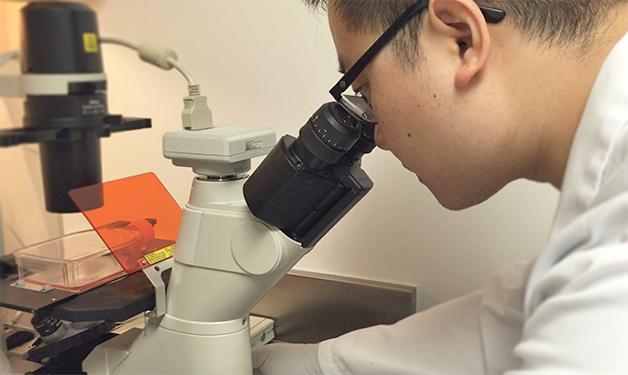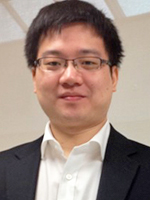
Meet Wade – he’s dedicated to preserving the gift of sight.
Q: What is your area of research and why does it interest you?
A: I study age-related macular degeneration, or AMD. It is a severe neurodegenerative disease that affects central vision and interferes with daily activities, such as reading and driving. Each year almost 80,000 Canadians are newly diagnosed with a form of AMD (dry or wet) and currently, there are estimated one million individuals in Canada living with AMD. Even more sobering is the fact that there are no treatments for dry AMD, which accounts for over 90% of AMD patients, and only one approved treatment for slowing vision loss in the wet AMD.
My PhD research focuses on the cellular mechanisms underlying the interplay between two crucial molecular pathways involved in dry AMD. Specifically, I am fascinated by the complex interactions between inflammation and cell death, two evolutionarily conserved molecular pathways. I am drilling down deeper into how these pathways interact at the molecular level. I am confident that my research will lead to a cellular target and strategy to prevent AMD from developing.
Q: What achievement are you the most proud of (so far)?
A: I have made significant progress in the frontier of modeling the dry form of AMD. I established animal models that take into account aging and drusen, two important risk factors for AMD, and that help us to study the pro-inflammatory activity in the retina that we now understand to be the early triggers of AMD. I presented these findings at the Association for Research in Vision and Ophthalmology annual meetings and I was honored to see that my research attracted the attention of both basic scientists and clinicians in the field.
Q: What do you see yourself doing in 20 years?
A: In 20 years, I hope to be developing new drug agents or strategies for AMD prevention, and patenting my ideas for translation into healthcare. We have agents to stop the progression of the wet form of the disease, but wouldn’t it be great to have the ability to prevent AMD from occurring in the first place? I hope to be working at an academic institution with clinicians and basic scientists towards translational studies on eye disease, somewhat like the Eye Care Center at Vancouver General Hospital, which is where I am doing my research now. It is really exciting for me to think about being on the front line fighting against this devastating eye disease and helping people with my knowledge.
Q: What do you like to do when you're not working?
A: When I am not working, I like to travel through beautiful British Columbia with my wife. We immerse ourselves in the cultural diversity and natural beauty that surround us here, and we appreciate living in Vancouver.
Q: What would you be doing if you weren't a researcher?
A: I would most likely be a painter. Before grade 10, I used to sketch every day with my favorite set of graphite pencils, sitting in the balcony, and drawing blue sky and lovely birds. I have been trying to get myself back into drawing again, just as a hobby.
Q: What's one item that you can't live without when you're working?
A: Coffee. Depending on the workload, my need for coffee goes from zero to 3 cups a day. Staying caffeinated is a key to success for me!



